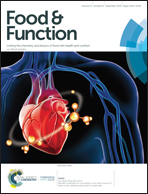Cross-modal interactions as a strategy to enhance salty taste and to maintain liking of low-salt food: a review
Abstract
Salt reduction in foods is becoming an important challenge to protect population health from severe diseases as recommended by different health agencies worldwide. Among the reduction strategies already evaluated in order to lower sodium salt content in foods, the use of cross-modal interactions between taste and odour, regardless of saltiness, was revealed to be a very promising method to improve saltiness perception. Cross-modal odour–taste interactions, as means to enhance salty taste in foods, is reviewed. Salt-related odours can enhance salty taste in water solutions containing a low level of sodium chloride through odour-induced changes in taste perception. Odour-induced saltiness perception enhancement (OISE) depends on salt concentration (intensity). OISE was also found to be effective in low salt content solid model cheese but was texture- and composition-dependent. A significant enhancement in saltiness perception induced by Comté cheese and sardine odours was observed only in model foods with soft textures. In ternary odour–sour–salty solutions, sourness additively enhanced saltiness perception with salt-related odours. Finally, in cream-based food systems, a strategy combining OISE and heterogeneous distribution of stimuli was found to compensate for a greater than 35% decrease in salt content without significant loss of acceptability. However, variation in the composition of the food matrix influenced aroma and salt release and consequently the overall saltiness perception. A better knowledge of the mechanisms involved in cross-modal perceptual interactions at the central level should allow for the optimization of their use as salt reduction strategies for healthier food design.



 Please wait while we load your content...
Please wait while we load your content...